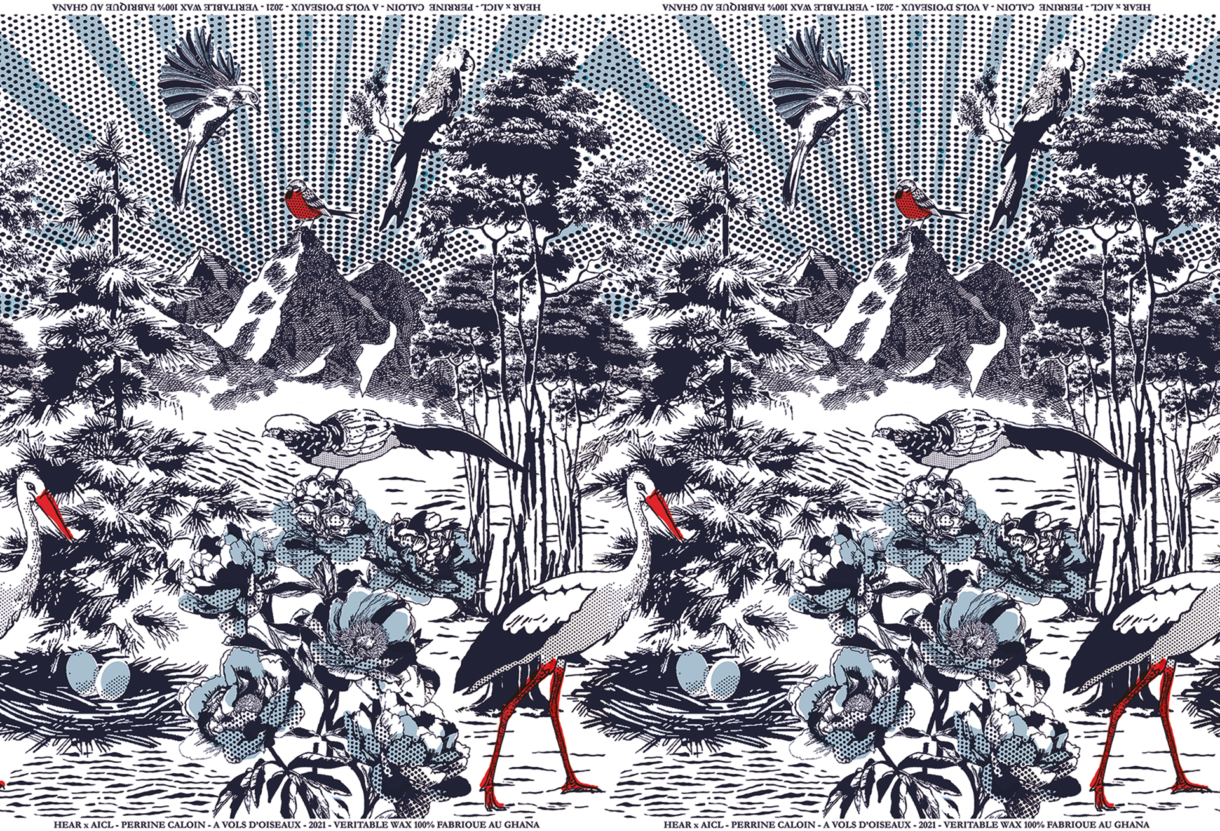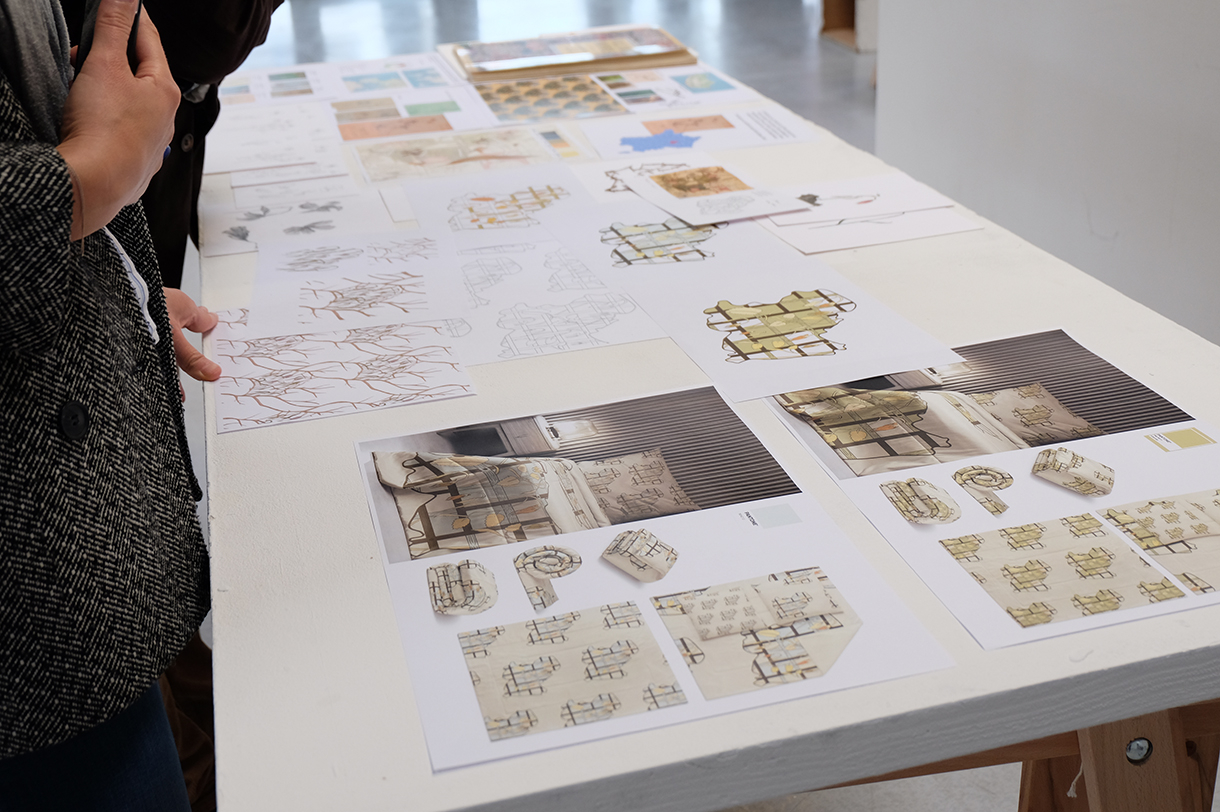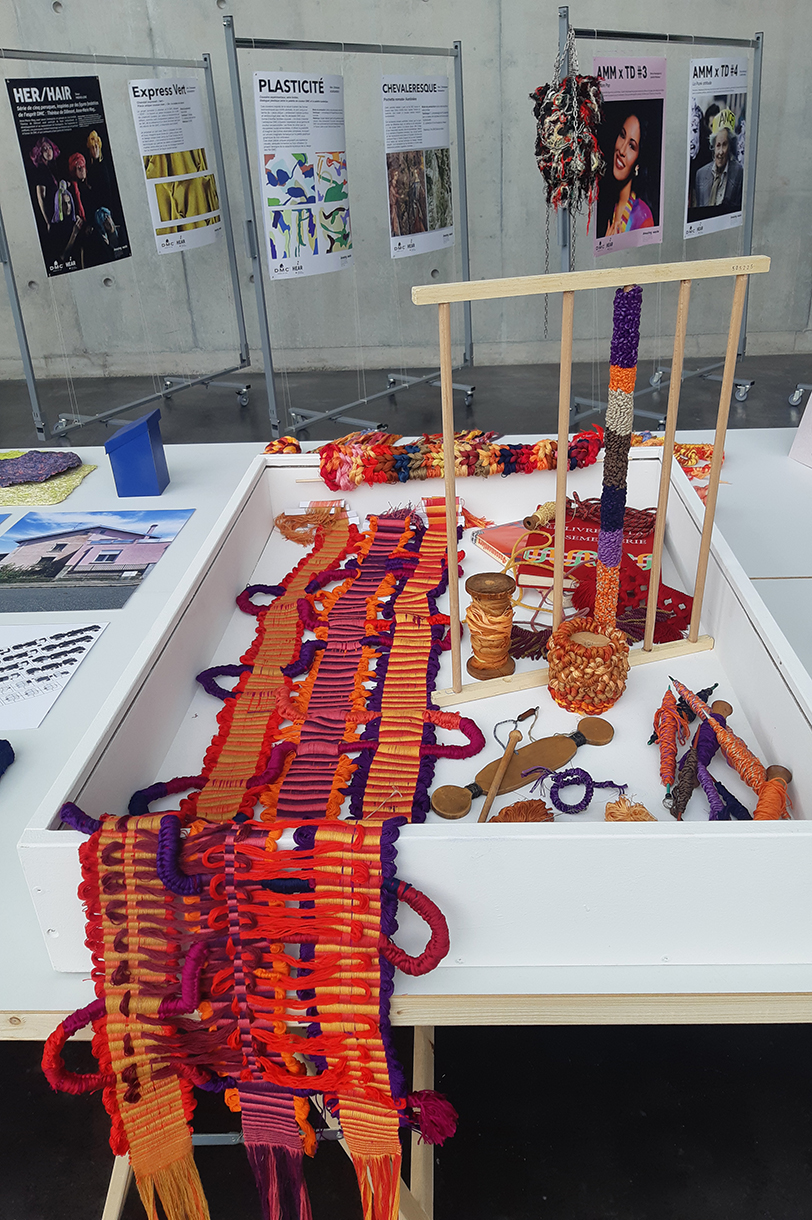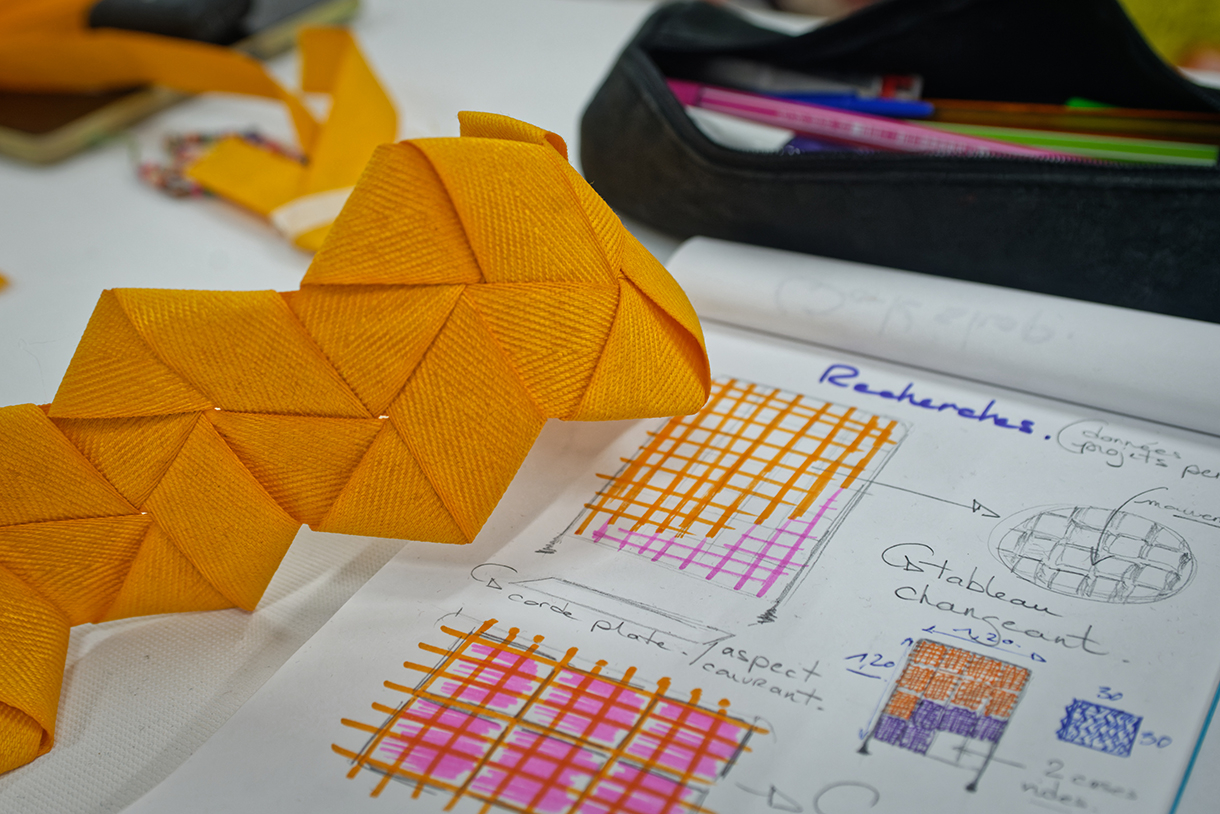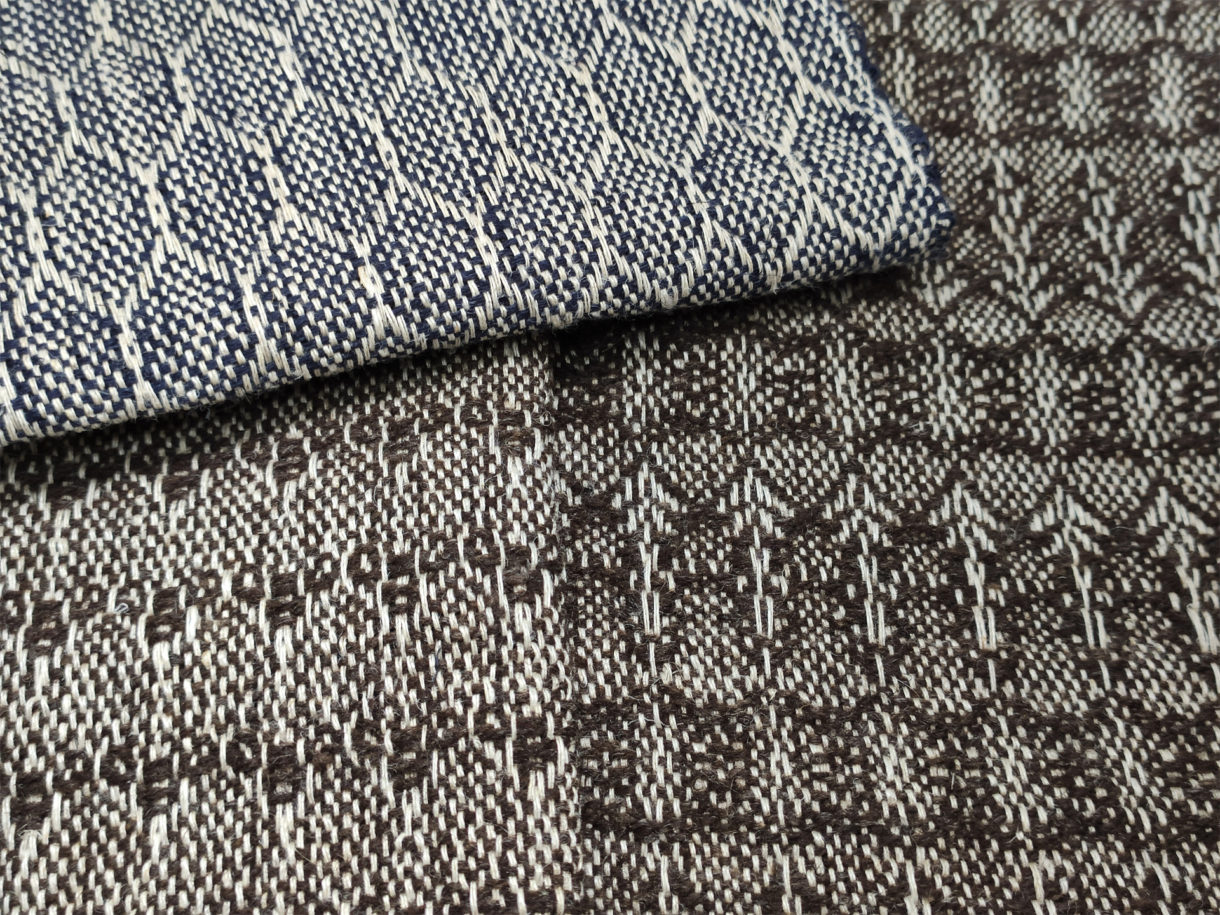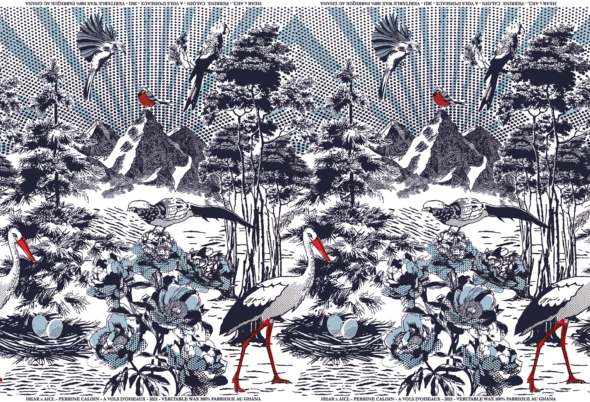Textile Design
Textile Design specialisation is located on the Mulhouse campus and it’s unique character may be attributed to it’s specific teaching. The specialisation helps students to progressively grasp contemporary issues concerning industry and craft production tools in an age of digital revolution.
Le textile questionnera les notions d’ornement, de motif, de décoration, dans lesquels la texture et la matière sont à l’œuvre tout comme la pertinence du territoire d’investigation.
A multidisciplinary approach
Multidisciplinary and transversal, the textile design specialisation develop itself through the implementation of commissions for companies and institutions along with research projects. Throughout their studies, students are encouraged to engage in collaborative work. In cooperation with the Art department, they participate in regular workshop sessions with visiting artists and professionals which enable experimentation and encounters.
During the Bachelor (years 2 and 3), leading to the DNA (National Diploma in Art), the Textile Design specialisations offer distinct courses based on subjects related to the discovery of materials and creative processes. Design students exhibit their work every year at national and international events. In 2017, they presented projects at the Design Biennale in Saint-Étienne or Heimtextil in Germany.
National Diplomas
– DNA National Diploma in Arts (awarding a Bachelor’s degree) with a major in Design and a specialisation in Textile Design
– National Higher Degree in Visual Expression (awarding a Master’s degree) with a major in Communication and a specialisation in Textile Design
Admissions start in year 2 when following the school’s regular curriculum, and transfers are accepted in year 2, 3 and 4 after committee approval.
Contact
Rosalie Behra
+33 (0)3 69 76 61 02
rosalie.behra@hear.fr
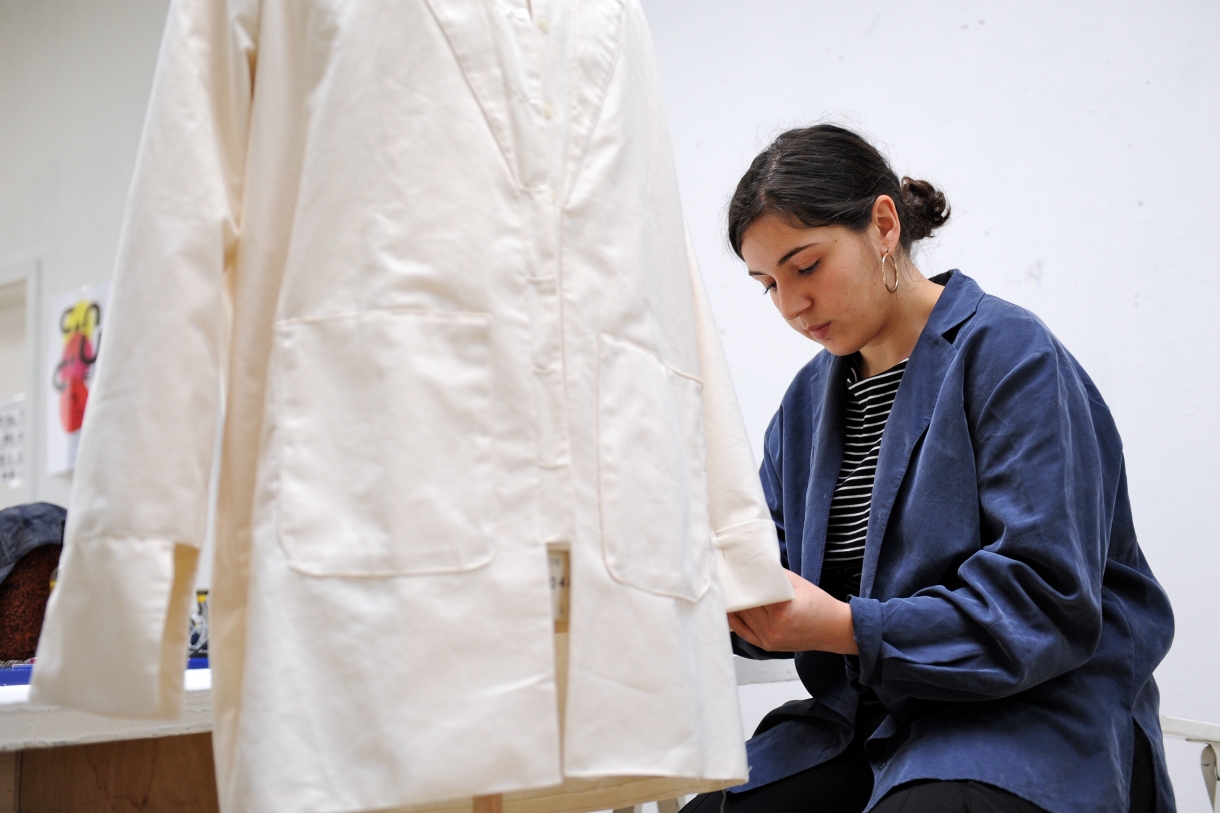
Deux cycles d’enseignement
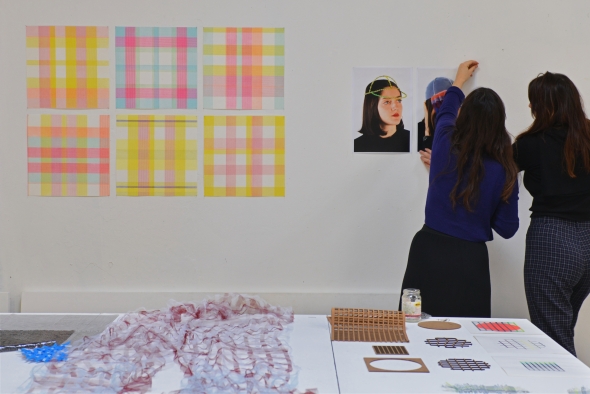
Bachelor: two distinct specialisations
By incorporating questions concerning theoretical, social, political and artistic pratices, the Textile design specialisation helps students to progressively grasp contemporary issues concerning industry and craft production tools in an age of digital revolution. Asking questions that are both aesthetic and ethical, the task of the designer is to deal with the realities of both finance and production.
Project-based teaching is central to the specialisation: in parallel with workshops enabling the discovery of diverse materials students are given basic instruction in drawing, colour, volume and graphics and attend specific theoretical courses enriched with lectures on art history and design issues. Students are introduced to processes involving materials, drawing pratices, photography, representation and computing and also learn about graphics and printing techniques (engraving, screen printing). Furthermore, these introductions accompany the development of a personal approach to working which is encouraged throughout the training programme.
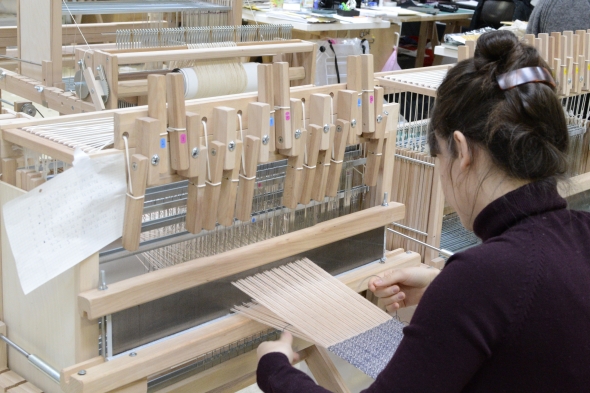
Master: Transversality and joint projects
In years 4 and 5, all students from Textile design and Design sections share projects and seminars based on a social issue defined by the teaching staff. A personalized tutoring is undertaken in relation to the each student’s project and research theme. Students also carry out a personal project consisting of a research dissertation. The dissertation develops a project concerning object design, surface design, fashion design, domestic design, space design, service design or communication, including the political dimension of design, at the heart of the various propositions.
The Design section is part of a rich and varied space for experimentation in which the histories of design, materials, forms and uses rub shoulders and feed questions linked to contemporary art issues. The contextual approach and the definition of issues constitute the invariants particular to research in design, just as the notions of scale and proportion guide the project. In order to help students find a personal space for thinking and practice, their training explores various questions, depending on the project being developed. Textiles, for example, questions notions of ornamentation, pattern and decoration in which texture and material are in play, along with the pertinence of the field of investigation. It is all about helping the development of awareness and that is cultivating the critical views that students cast on their environment.
